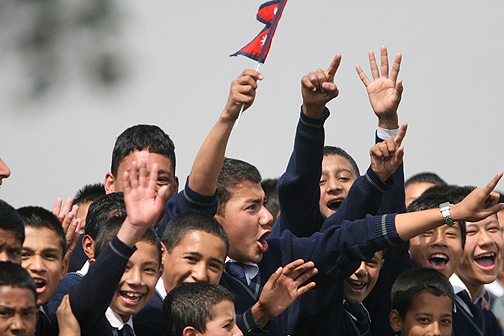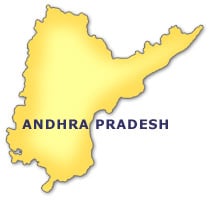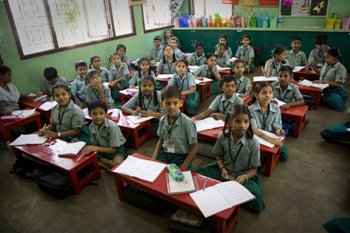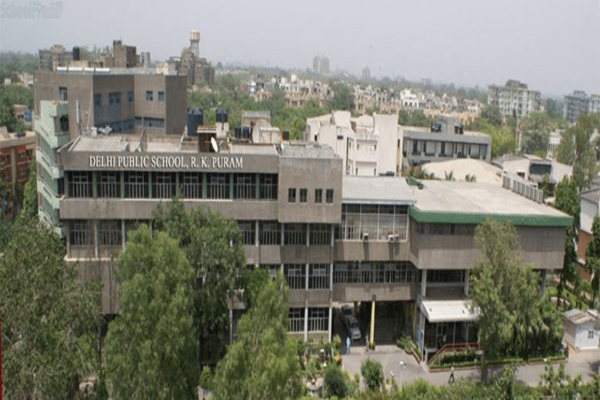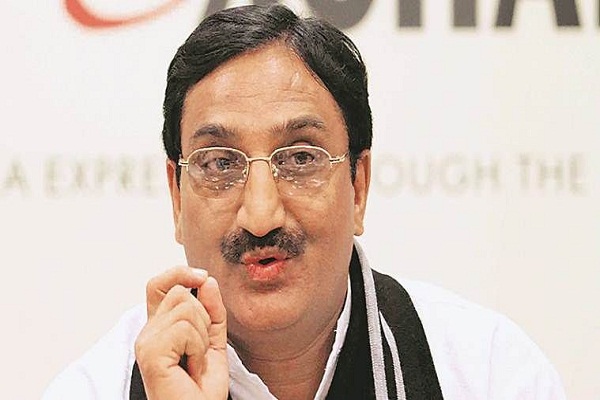 The Central Board of Secondary Education (CBSE) has now introduced a vocational course on ”Geospatial Technology” for its higher secondary students, scheduled to come into effect from the 2013-2014 session.The course offers an opportunity for the students to understand the basics of the technology dealing with mapping and applications. Students will now get an insight into the diverse geospatial database concepts, creating and implementing the same, GIS theory and spatial analysis, supplemented by extensive practical exercises. The present curriculum on the subject will also help students acquire skills for further studies and to enter into the world as professionals. The new subject will be offered as a single vocational elective in class XI and XII. Students can opt for it as an elective with any other combination of subjects at the senior secondary level or as an additional sixth subject as per the scheme of studies of the Board.
The Central Board of Secondary Education (CBSE) has now introduced a vocational course on ”Geospatial Technology” for its higher secondary students, scheduled to come into effect from the 2013-2014 session.The course offers an opportunity for the students to understand the basics of the technology dealing with mapping and applications. Students will now get an insight into the diverse geospatial database concepts, creating and implementing the same, GIS theory and spatial analysis, supplemented by extensive practical exercises. The present curriculum on the subject will also help students acquire skills for further studies and to enter into the world as professionals. The new subject will be offered as a single vocational elective in class XI and XII. Students can opt for it as an elective with any other combination of subjects at the senior secondary level or as an additional sixth subject as per the scheme of studies of the Board.
CBSE introduces course in GIS
Maharashtra to adopt CET model from 2013
 Maharashtra will adopt the single common entrance test (CET) model for admissions to engineering colleges, including the Indian Institutes of Technologies (IITs) and National Institute of Technologies (NITs), from 2013, state technical education minister Rajesh Tope said on Monday.
Maharashtra will adopt the single common entrance test (CET) model for admissions to engineering colleges, including the Indian Institutes of Technologies (IITs) and National Institute of Technologies (NITs), from 2013, state technical education minister Rajesh Tope said on Monday.
“A proposal in this regard has been prepared and will soon be presented to the state Cabinet for its approval,” Tope told a press conference here.
The new format suggested by HRD minister Kapil Sibal for admission to all central government-funded engineering institutions — IITs, NITs, IIITs etc, proposes one common entrance test, the Joint Entrance Examination (JEE), which will replace the old IIT-JEE and AIEEE.
“Maharashtra government will give 50 per cent weightage to marks scored by students of both English and non-English medium schools in their class XII exam”, Tope said.
The minister said that day and night classes have been started in the state polytechnic colleges for the students from minority communities.
XLRI unveils new brand identity and brand architecture
 With a clear intent to modernise and energise its brand touch-points, XLRI, the premier private B School in India, has unveiled its new brand identity. The updated brand identity of the institute is the visual representation of the XLRI brand – (the tangible elements that make XLRI brand recognisable and reinforce its core values and heritage). The new logo that has been developed is a modern and stylised representation of the traditional XLRI logo and it consists of two primary logos (horizontal name logo and shield logo) and a tagline. The original logo of the institute was developed in early 1950s by the founding fathers. In 2004 slight modifications were made on the logo to include the year of founding – 1949 together with the guiding motto – Excellence & Integrity.
With a clear intent to modernise and energise its brand touch-points, XLRI, the premier private B School in India, has unveiled its new brand identity. The updated brand identity of the institute is the visual representation of the XLRI brand – (the tangible elements that make XLRI brand recognisable and reinforce its core values and heritage). The new logo that has been developed is a modern and stylised representation of the traditional XLRI logo and it consists of two primary logos (horizontal name logo and shield logo) and a tagline. The original logo of the institute was developed in early 1950s by the founding fathers. In 2004 slight modifications were made on the logo to include the year of founding – 1949 together with the guiding motto – Excellence & Integrity.
Embedded in the new horizontal name logo, the refined category descriptor ‘Xavier School of Management’ seeks to underscore XLRI’s standing as a more inclusive management education institution whilst retaining the name of the patron saint – Saint Xavier. School of Management also goes beyond the confines of being a mere ‘business?centric’ institution whilst embracing management education in its entirety. The tagline ?’For the Greater Good’ is a reminder of why XLRI exists and how it can be a force for greater good in shaping the management education sector and the community at large.
On the occasion of unveiling the new brand identity E Abraham S.J., the Director of XLRI said ‘The updated brand identity of XLRI connotes the institution’s futuristic outlook whilst retaining the old ‘Jesuit Heritage. The new brand identity also represents the institute’s clear focus and direction that allow greater freedom for the brand to grow nationally and globally’.
Haryana to Provide Self-Defence Training to School Girls
 Haryana School Shiksha Pariyojna Parishad, under the Sarva Shiksha Abhiyan, will provide training in self-defence and other martial arts to girl students studying at elementary level during 2012-13. Under this scheme, training would be provided in five schools of each block and for this trainers would be appointed for a duration of three months, an official spokesman said.
Haryana School Shiksha Pariyojna Parishad, under the Sarva Shiksha Abhiyan, will provide training in self-defence and other martial arts to girl students studying at elementary level during 2012-13. Under this scheme, training would be provided in five schools of each block and for this trainers would be appointed for a duration of three months, an official spokesman said.
He said that under the scheme, there was a provision for a budget of Rs 4,500 per month per trainer. In Mahendragarh district, the programme would be organised in 20 schools where a batch of minimum 50 students would be chosen at the district-level, the spokesman said.
CBSE joins hand with Pearson in School Education
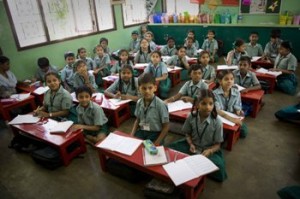 Central Board of Secondary Education and Pearson Foundation will set up a Centre for Assessment, Evaluation and Research – a not for profit centre of excellence to contribute to the reform of learning.
Central Board of Secondary Education and Pearson Foundation will set up a Centre for Assessment, Evaluation and Research – a not for profit centre of excellence to contribute to the reform of learning.
HRD Minister Kapil Sibal, who announced the formation of the centre, felt one of the prime areas for any assessment is to evolve mechanism where a child is able to discover himself and communicate.
The centre is expected to influence the CBSE schools and students, primarily through grass roots research and the application of its findings. Initially, this will focus on the impact of recent CBSE innovations such as Continuous Comprehensive Evaluation and Life Skills Curriculum. The centre will draw on relevant international best practice to inform its recommendations for improved teaching practice and approaches to assessment before rolling out an extensive program of professional development of teachers.
MP Quota for Admission Raised in KVs
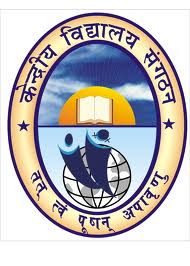 Kendriya Vidyalaya Sangathan (KVS), with the approval of Board of Governors has implemented a new scheme of Special Dispensation Admission for Members of Parliament in Kendriya Vidyalayas (KVs) with effect from 20th August 2012.
Kendriya Vidyalaya Sangathan (KVS), with the approval of Board of Governors has implemented a new scheme of Special Dispensation Admission for Members of Parliament in Kendriya Vidyalayas (KVs) with effect from 20th August 2012.
Under the scheme, the dispensation admission quota on the recommendations for each MP has been raised to six admissions in an academic year. Such recommendations would be for admissions in Kendriya Vidyalayas located in his/her constituency only. In case there is no Kendriya Vidyalaya in the constituency of the Member of Parliament (Lok Sabha), he/she may recommend these admissions in the KVs located in any neighboring contiguous constituency. However, for Members of the Rajya Sabha, the state from which the Member has been elected would be deemed to be his/her constituency for this purpose. Nominated Members of the Rajya Sabha and Lok Sabha can recommend six cases for admission in any one or more KVs of the country.



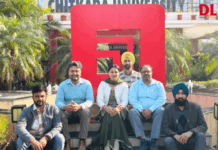





 Next Education India Pvt Ltd has introduced additional offering of content for 20 State Boards for their product ‘LearnNext’.
Next Education India Pvt Ltd has introduced additional offering of content for 20 State Boards for their product ‘LearnNext’.